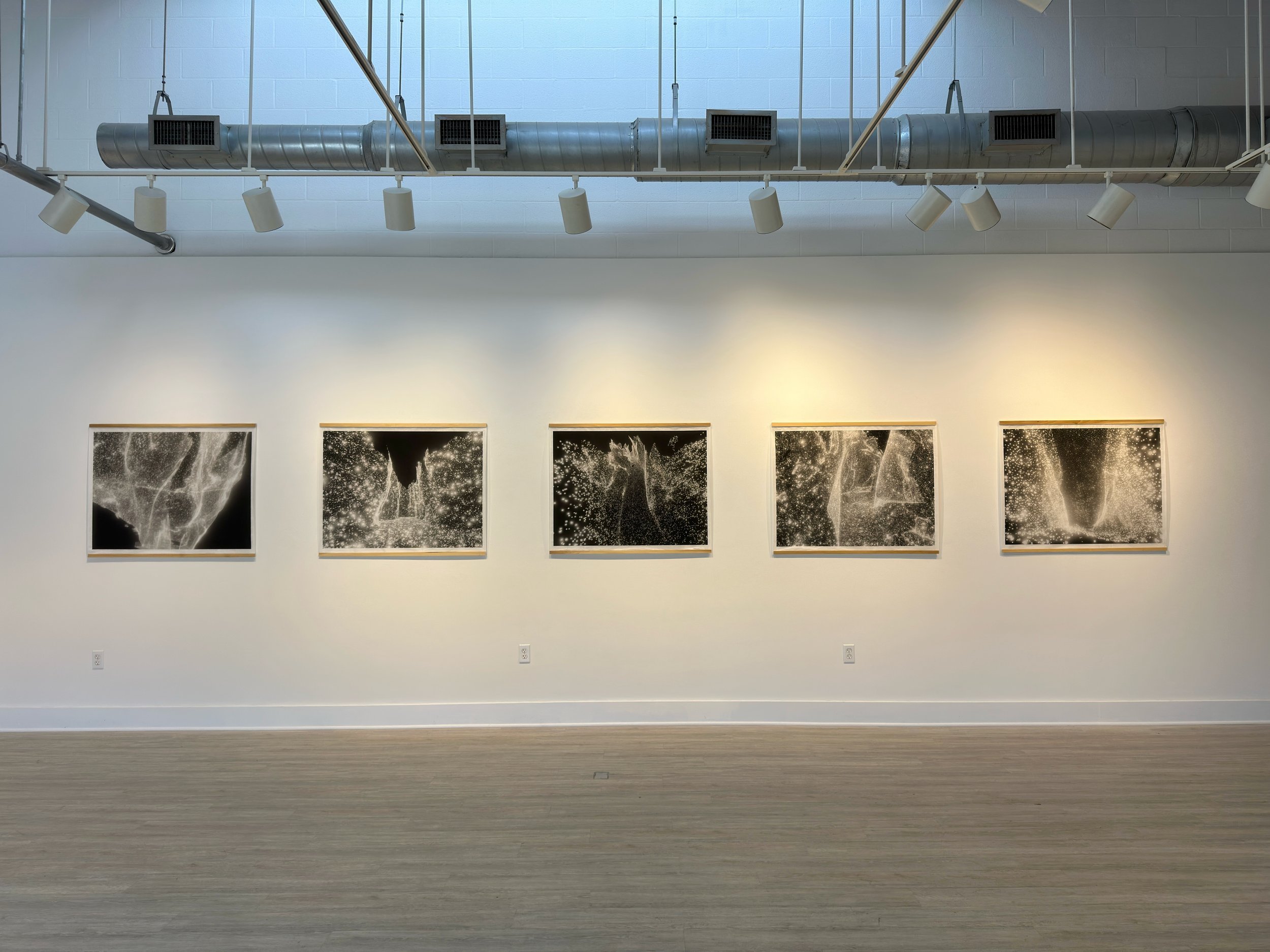Still Small Voice
In early 2020, just a week after my father’s death and two years after the birth of my son, I began making regular trips to Death Valley and important places of my childhood in the Mojave Desert to reconnect with my initial creative impulses and to see what more I could discover photographing in those familiar places. The time photographing and camping alone in the backcountry gave me space to grieve, reflect on our relationship as fathers and sons, and create work that became a meditation on birth, death, creation myths, and the threshold between this world and the unknowable.
The works in this exhibition explore that thresholds in different forms. Night photographs of the desert look outward and back into millions of years when the light left those distant galaxies. The point clouds of canyon walls represent the idea of the Veil and the threshold between the physical and spiritual realms, while also evoking both geological depth and cosmic scale. Portals allude half-familiar terrains, suggesting landscapes beyond the visible world. The gold-backed prints of the Sun are from the exact days and times of my son’s birth and my father’s death, linking celestial activity to the most intimate moments of my own life. It also serves as a reminder that the Sun is the product of a much older star’s death—just as is every atom in our bodies, every element in these prints, and every photon that illuminates them. We are all part of the same infinite energy that predates the Big Bang and extends beyond the observable universe.
I grew up Mormon, and was taught to listen for signs of the holy spirit in a still small voice that fills your chest with a feeling of love and connection. They tell you it is what gives you proof that their's is the one true church, and they are encouraged and even pressured to bare their testimony of that truth before the whole congregation. It was something I could never do.
That the stirring in my chest was there—it was never felt in prayer or in church or in receiving the sacrament. It was something I felt walking through the desert and mountains near my home in Joshua Tree. It was something my father felt was his failure, and kept him from ascending to the highest celestial realms.
That idea of the celestial realms was also introduced very young, and that we pass through the Veil of Forgetfulness when we are born, and represents threshold between our material life and the spirit world. But the idea of the veil isn’t a unique to the LDS church, and is a theme that runs through most cultures' religion, myth, and philosophy. In Hinduism, the Veil of Māyā hides ultimate truth. In Egypt, the goddess Isis was veiled to signify hidden knowledge. In Jewish and Christian traditions, the temple veil marked the divide between humanity and God. In Celtic lore, the veil between living and dead may thin at specific places and times of year.
A lot of the time I spent in Death Valley over the last few trips has been exploring the deep canyons found there. In 2022, I began using with LiDAR scanning technology along with my traditional photographic work. The pictures, that begin as a mapping the environment by recording the reflections of infrared laser pulses, are then rendered in 3D modeling software and made into large-scale carbon ink jet prints on delicate and thin Kozo paper. The canyons become points of light that take on other forms and meaning. What begins as geology becomes a metaphor for crossing thresholds—between what we see and what we sense, between the known and the unknowable.
On that first trip in 2020 I didn’t have a clear goal or idea, but I gravitated toward an elongated frame using wide-angle lenses, and the abstracted forms of the canyon walls created a sense of not knowing where you are in space. The rock walls are imposing and seemingly chaotic, but by getting lost in the pictures you begin to see what I think of as the edge between chaos and cosmos—a passage that leads to some light at the center. I see that light as both in us and what we are on a lifelong journey to reach. That chaos is perfect, and the goal is to integrate yourself with that perfection.
I made a second short trip to Death Valley in January 2022 and 2025 to continue working on the nascent project, and found myself hiking back through the canyons where I was photographing well after dark. Without the aid of artificial light and only the moonlight to guide me, my pace slowed, and it created a sense of hyper-awareness and mental space that led me to think about photographing at night as a way to embrace and confront the unknown.
































